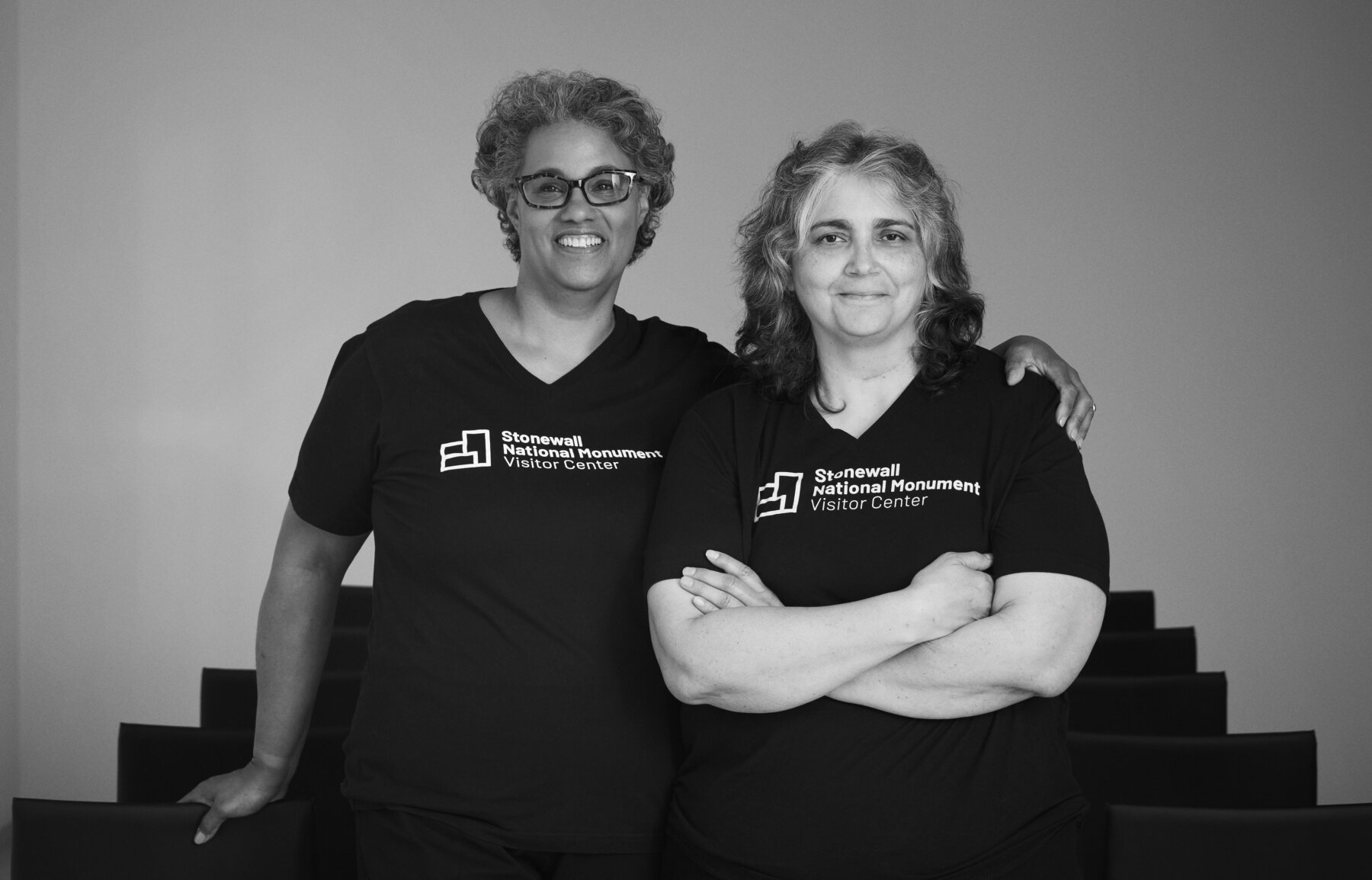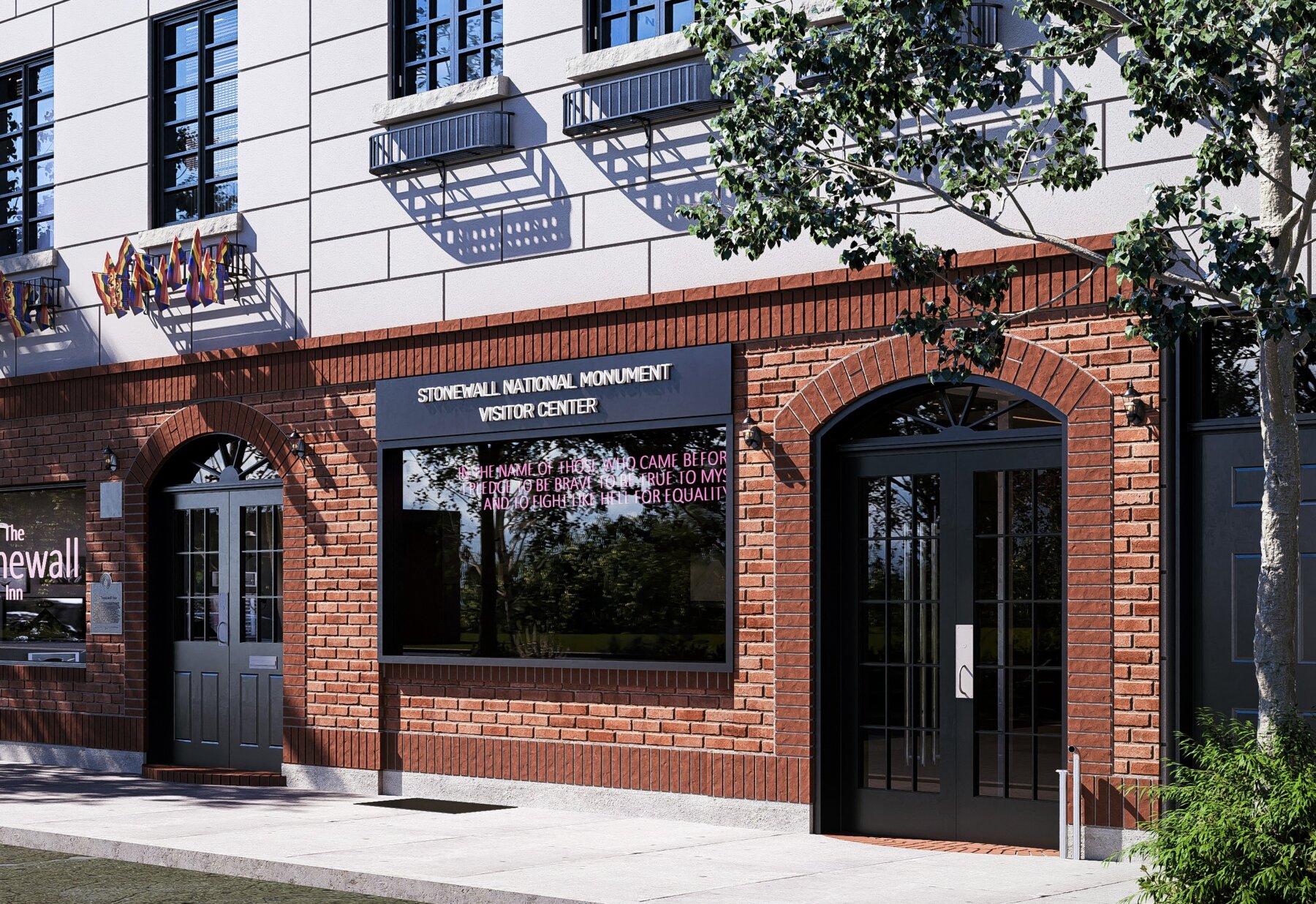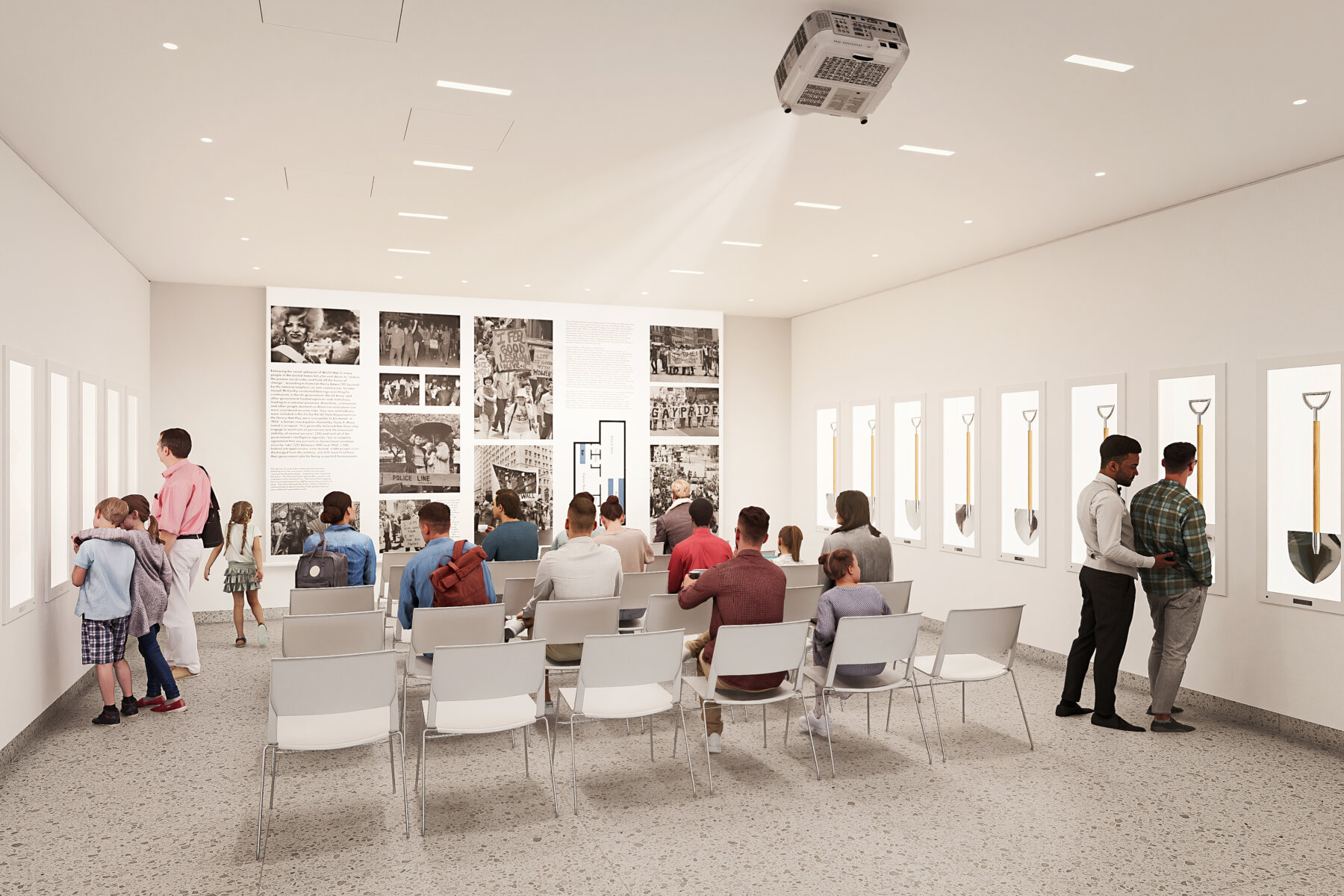
Over the past four decades, half of the original Stonewall Inn has been occupied by what you’d expect to see in Manhattan’s West Village — a bagel shop, a Chinese restaurant and a clothing store. But on June 28, the space will officially reopen as a complement to the iconic gay bar next door.
A silver outline marks where the bar once stood, large portraits of queer pioneers line the white walls and a hint of exposed brick showcases the original character of the building. At nearly 2,100 square feet, intimacy is the point of the Stonewall National Monument Visitor Center.
“The founding principles of the visitor center is that it is home, and you can interpret home any way that suits where you are and who you are,” said Ann Marie Gothard, co-founder of the visitor center. “We want this to be a place that’s welcoming for all.”
Gothard and her wife, Diana Rodriguez, have been together for nearly 40 years, the past dozen of which they have spent working on their LGTBQ-awareness organization Pride Live. Their latest project is the Stonewall Visitor Center, the first LGBTQ visitor center in the National Park Service.

“I just realized that there was a need, even more so than the historical component for this place, to bring that level of diversity to the national parks,” said Rodriguez.
In 2016, President Barack Obama named the site of the 1969 Stonewall uprisings a national monument, recognizing the pivotal moment in the nation’s LGBTQ movement when patrons and neighbors fought back against a police raid at Stonewall Inn. Despite the honor, the journey to create a space contextualizing that history wasn’t easy for the couple. From a lack of funds to securing the location to challenging national park norms, Gothard and Rodriguez have faced a number of roadblocks — all at a time when legislation targeting LGBTQ people has reached record numbers.
“I don’t think it hit us until the lease was signed,” said Gothard. “It’s like, ‘OK, now you have keys to the door, and what are you going to do on the other side?’ And that’s when we really started to think about how to bring the story to life, because something happened here that has been chronicled.”
Honoring the queer pioneers who came before them
The visitor center isn’t the first project for the power duo. In establishing Pride Live in 2012, they launched LGBTQ history-preserving programs and events like “Stonewall Day,” an annual concert during NYC Pride, featuring performers like Christina Aguilera and Angelica Ross.


The heart of Rodriguez and Gothard’s work is rooted in their personal connection. The couple met in 1984 when Rodriguez and Gothard became basketball teammates at Georgetown University. The two grew inseparable, discovering feelings about themselves and each other they had never planned.
“We like to say we’ve grown up together,” said Gothard. “We’ve been through the highest highs and lowest lows. We look at our families and we’ve probably been together the longest of all, on either side of the family.”
Over the next few decades, Rodriguez worked in leadership and event-planning roles at organizations like the Jackie Robinson Foundation and GLAAD, and Gothard worked in nonprofit communications. They eventually combined their production skills and love for their community to create a space honoring LGBTQ history — even if they weren’t sure where that space was yet.
“So many people have paved the way for us and allowed us to do many things,” said Gothard. “What could we do in a significant way?”
Shortly after the 1969 riots, the Stonewall Inn went out of business and the property was split into two spaces. It wasn’t until 2006 that part of the original space was acquired by two New Yorkers who were invested in its history and preserved it as a club and LGBTQ landmark. While Rodriguez and Gothard had not envisioned the other half of Stonewall as the home for their project, they seized the opportunity when the space’s lease went on the market in 2019.
“It was like someone was talking to us, like all the gays from before,” said Rodriguez.
Then the pandemic happened. Paying rent, let alone building out the space while the city was shut down, hampered their dream.
“If I’m being completely honest, I don’t think [it’s] the way the world works that two queer women of color would be expected to do something like this,” said Rodriguez. “In New York with a commercial lease, it’s 1,000 times tougher than I ever could have imagined.”
After gathering input from their community and capturing stories from the LGBTQ movement, finding inspiration at other national parks was next on their to-do list. In the summer of 2022, the couple took a tour of Yellowstone and Mount Rushmore with friends, an experience they say made clear what seemed to be missing from these landmarks — people like them.
“I just realized that there was a need, even more so than the historical component for this place, to bring that level of diversity to the national parks,” said Gothard.

Last month, the National Park Service came under fire when it released a memo effectively banning uniformed staffers from participating in Pride marches; days later, Interior Secretary Deb Haaland clarified employees could participate in uniform. A spokesperson for the National Park Service told NBCU Academy that the department is anticipating the opening of the visitor center and “NPS staff are dedicated to sharing the history of the Stonewall uprising and the ongoing struggle for LGBTQ+ equality.”
When it came time to finally build out the space, the couple gathered LGBTQ leaders in construction, law, art and more. “They understood the significance of it, and they wanted it to be what you see,” said Rodriguez.
The result is a bright-white interior, featuring exhibitions and a dedicated theater space to host in-person and virtual tours, lecture series and events. While there are nods to the original brick and furniture, much of the interior — floors, walls, ceilings, plumbing and electrical — had to be redone.
“What [visitors] won’t see is, foundationally, we tried to build this so we could be here forever,” said Rodriguez.
This week, which also marks the 55th anniversary of the Stonewall riots, the LGBTQ visitor center will open with headliner Cynthia Erivo and surprise performances. But more than a celebrity-filled party, the couple hopes visitors in and outside of the LGBTQ community will learn from the visitor center.
“I just hope they take a step back, realize where they are, learn about the legacy of Stonewall, and they feel compelled to take action,” said Rodriguez. “If they’re already taking action, that they can do more.”


